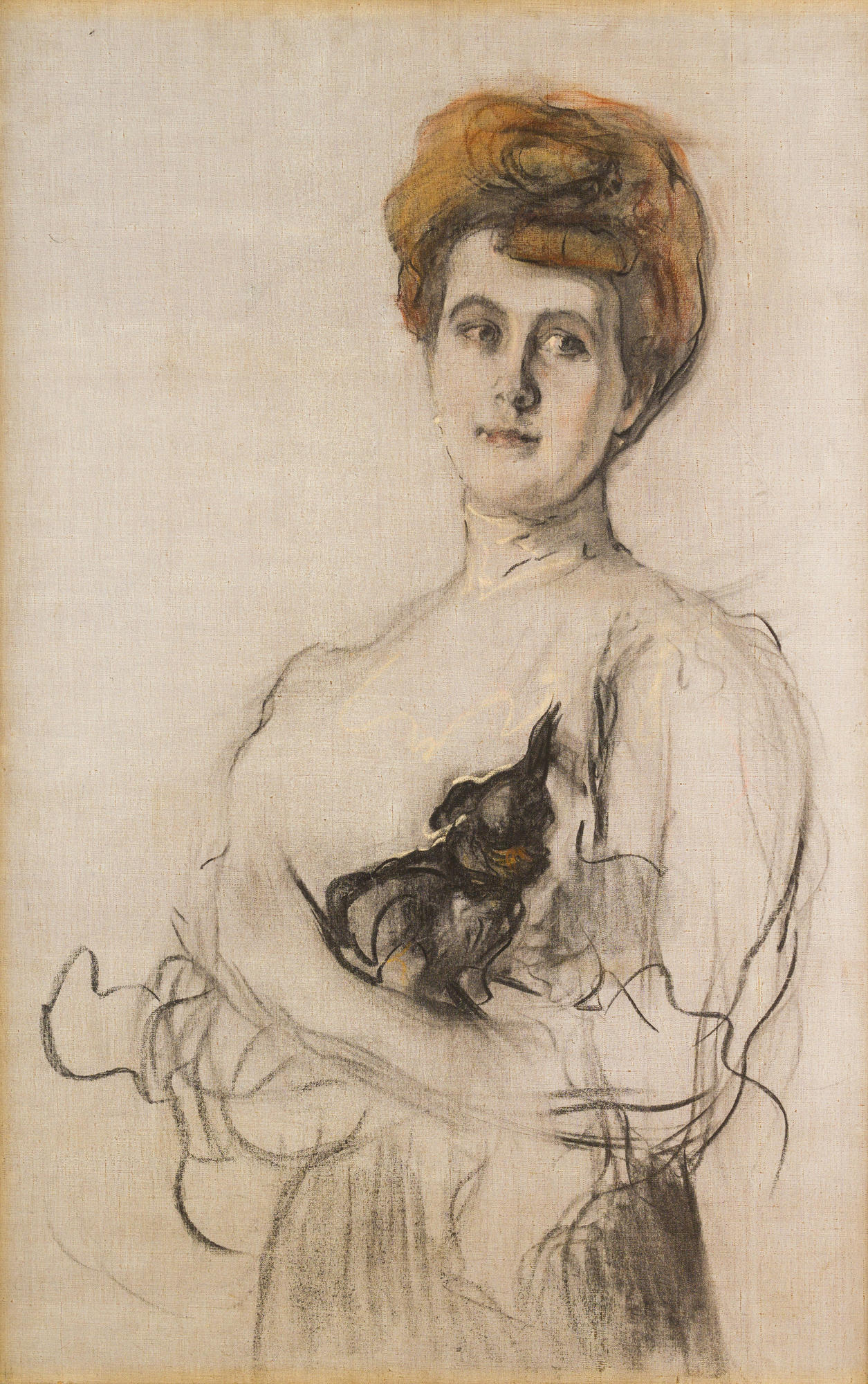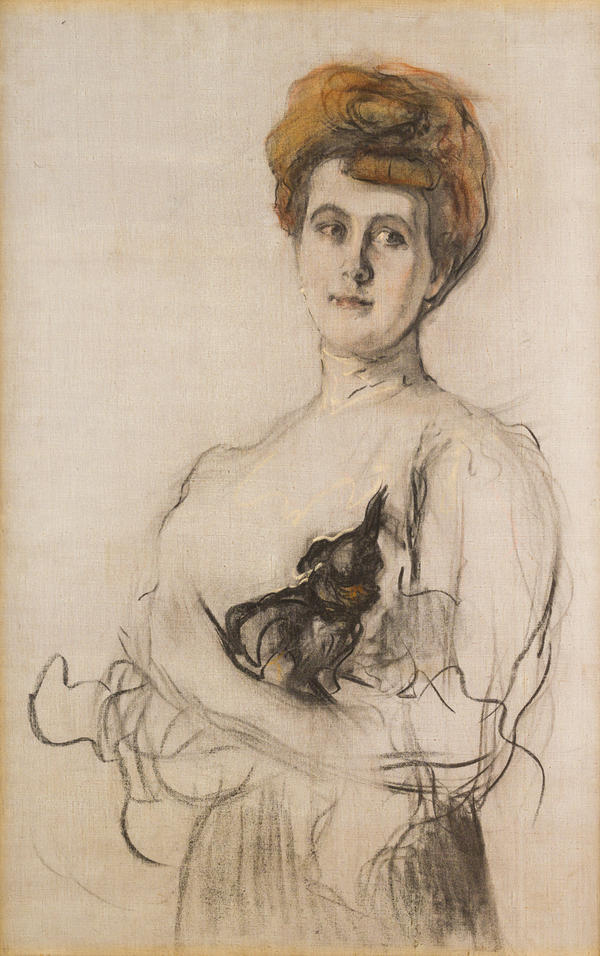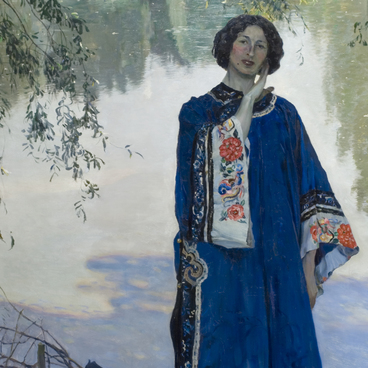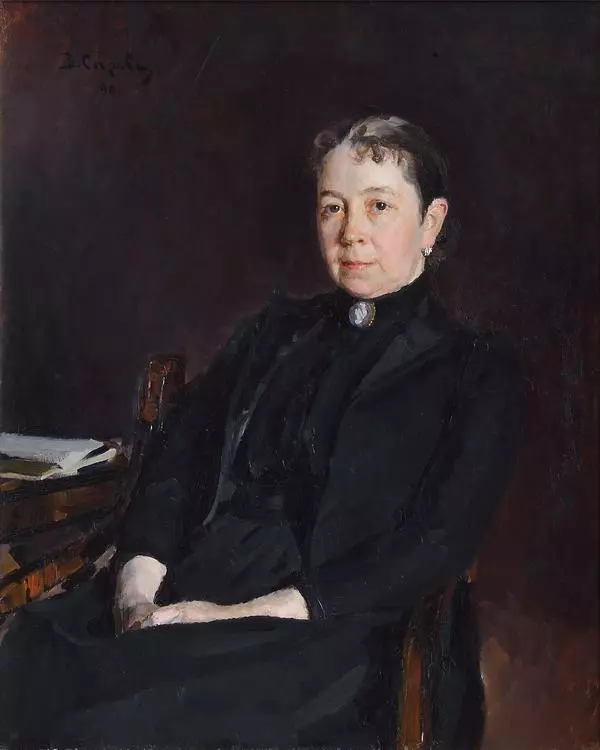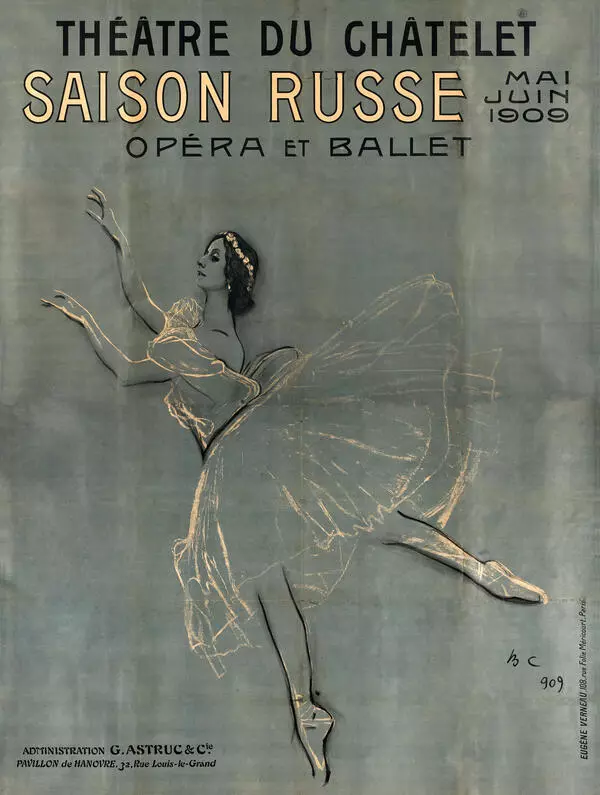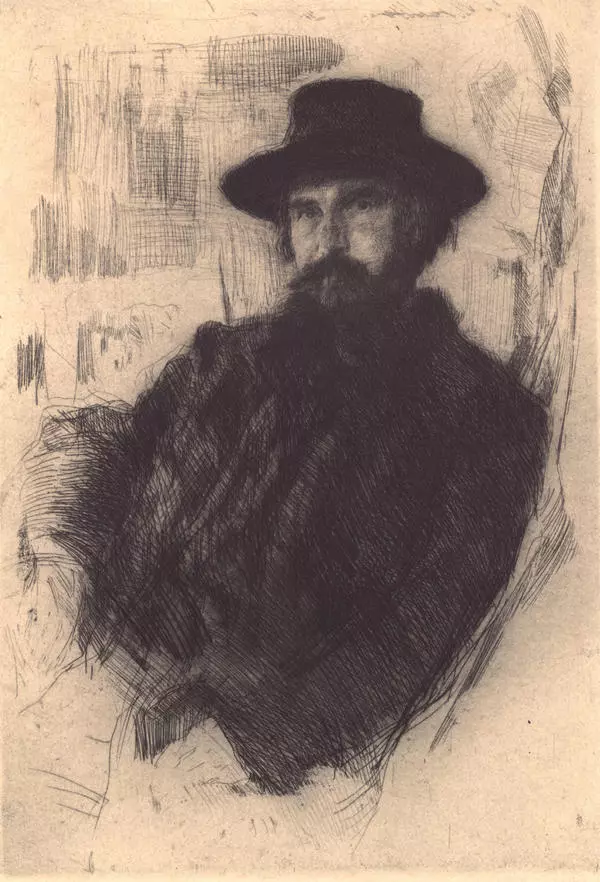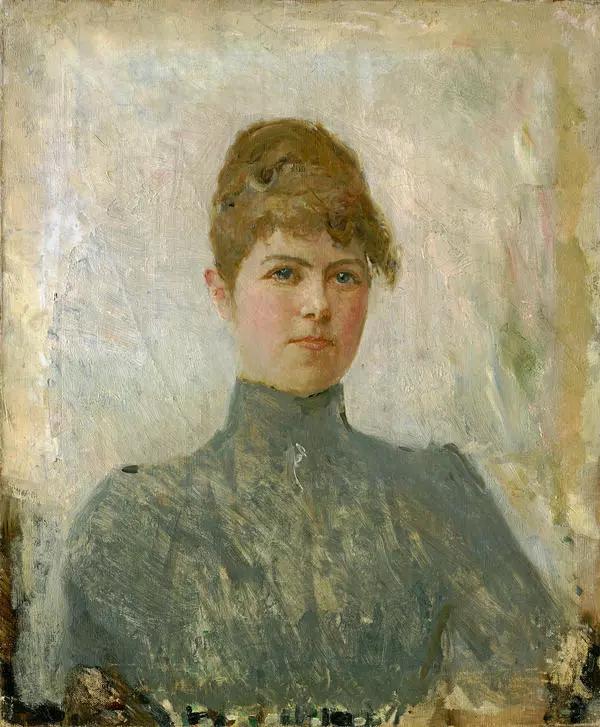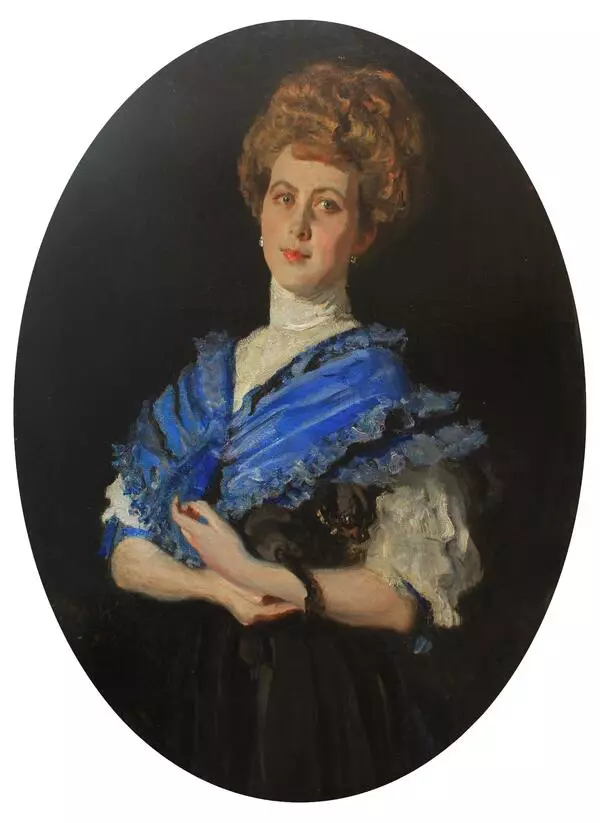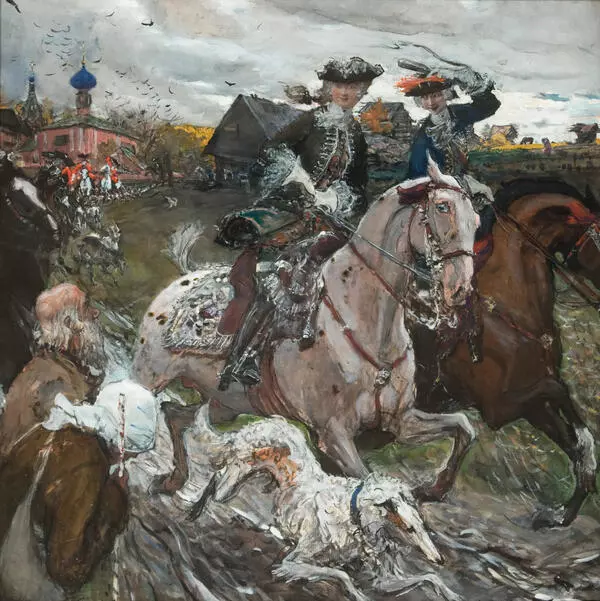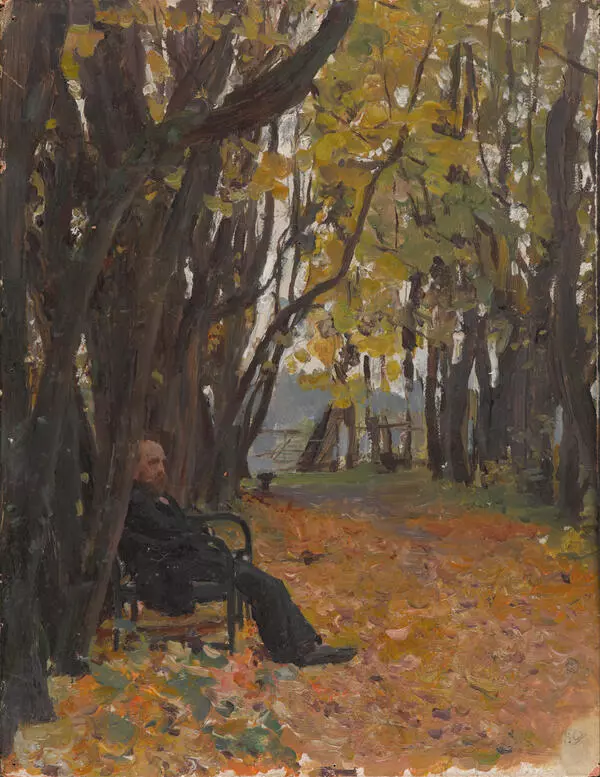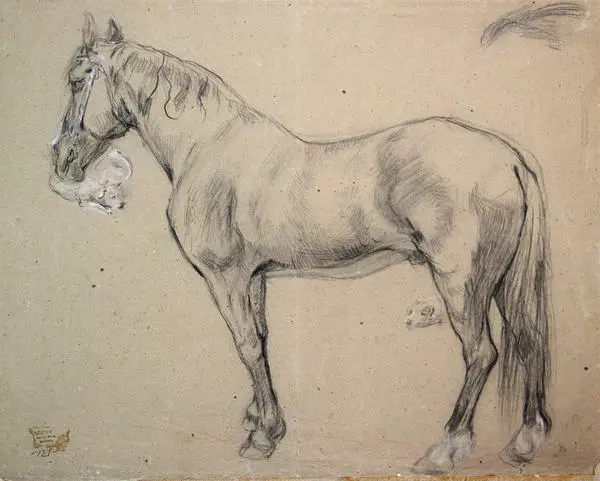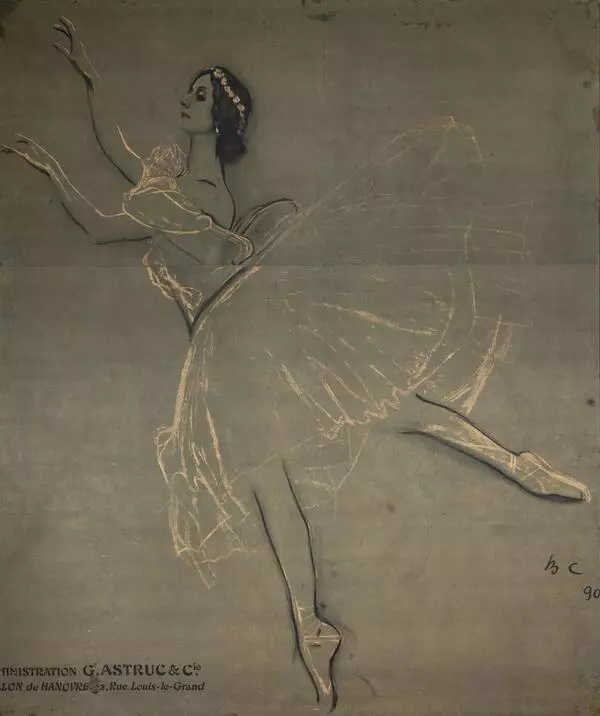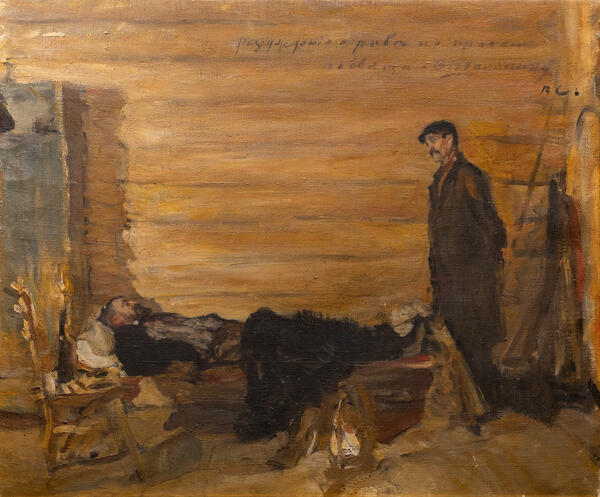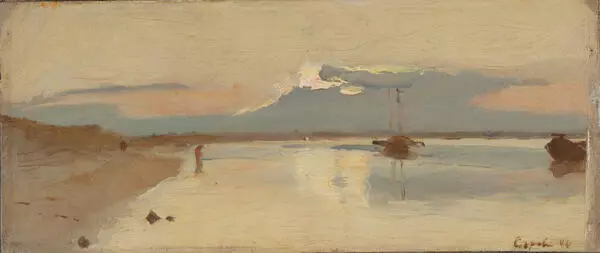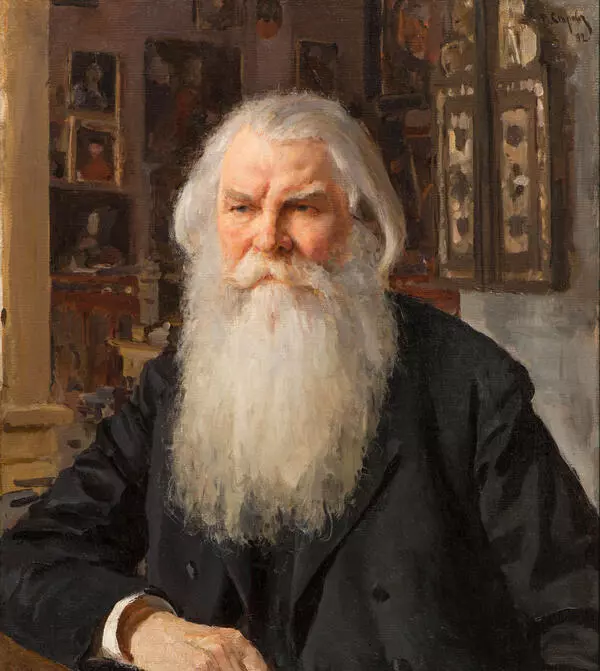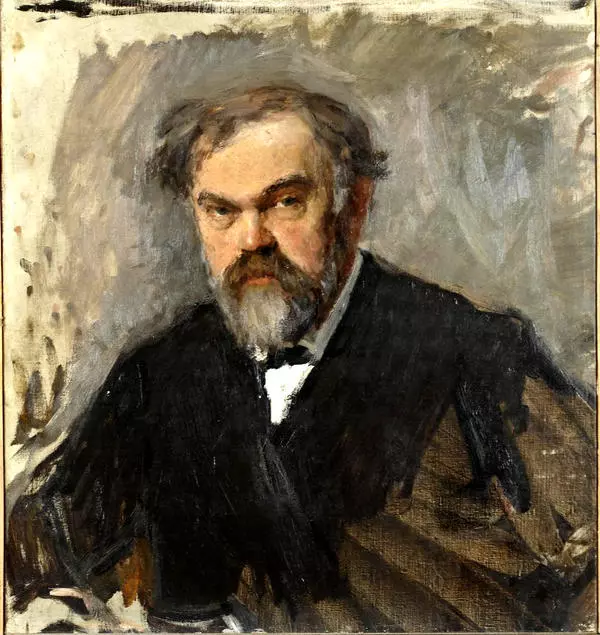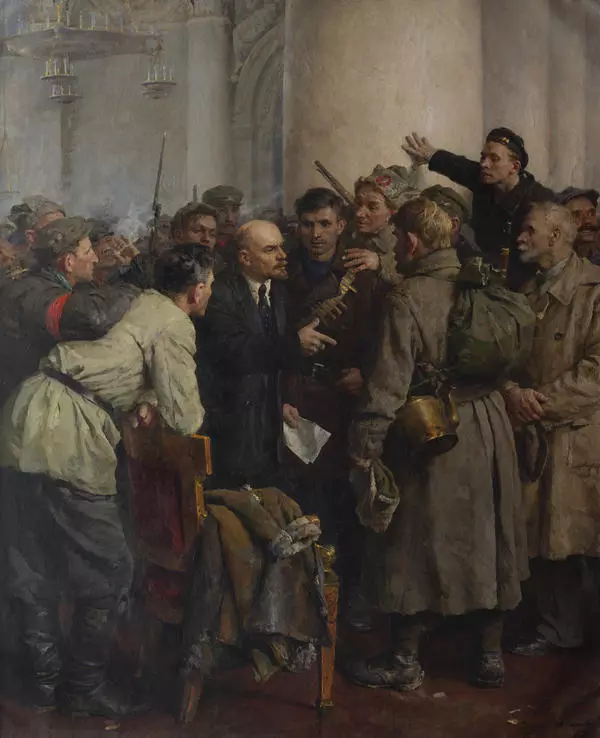A constant participant in exhibitions of the World of Art Association, Valentin Alexandrovich Serov was an outstanding master of psychological portrait. His paintings Girl with Peaches (1887) and The Girl in the Sunlight (1888) are famous far beyond Russia.
In the 1880s, the artist painted many portraits of art figures. Popular writers, actors, composers and painters sat for him. In the process of creating his works, he focused on studying the creative personality of his characters. The Portrait of Ballet Dancer E.S. Karzinkina was painted in 1905—1906, at the same time when the artist was working on the portraits of the Russian drama actress Maria Nikolayevna Yermolova and the famous opera singer Feodor Ivanovich Chaliapin.
Although the actress is depicted standing with her head held proudly and a direct look, this is an intimate portrait. This portrait style was very popular in the 19th century, when the nobility could have family galleries created at their estates; and an intimate portrait gave artists a lot more freedom in conveying the genuine inner world of the portrayed person.
Slim and gracious, Elizaveta Sergeyevna Karzinkina danced in the private ballet company of Russian patron of arts Savva Ivanovich Mamontov. Valentin Alexandrovich Serov portrayed the dancer holding a black toy dog in her arms.
Besides the portrait of Elizaveta Sergeyevna Karzinkina, the artist painted portraits of other high society beauties. In various years he worked on the portraits of Princess Zinaida Nikolayevna Yusupova, Princess Olga Konstantinovna Orlova and the wife of collector Vladimir Osipovich Girshman, Genrietta Leopoldovna. However, the Portrait of Ballet Dancer E.S. Karzinkina in charcoal and pastel demonstrates the virtuosity of Valentin Alexandrovich Serov and occupies a special place in his art. This portrait opened the series of graphic portraits of outstanding Russian ballet dancers: Tamara Platonovna Karsavina (1909), Anna Pavlovna Pavlova (1910), Ida Lvovna Rubinstein (1910).
In the 1900s the artist was working practically in one line, as expressive as possible and yet as if left ‘unsaid’. In Serov’s portraits of that period body plastics and volume are read by the contour, and the line acts as the main instrument for conveying the image. With the Portrait of Ballet Dancer E.S. Karzinkina the artist reiterated his main esthetic statement: “beauty in life should have the same beauty in art”.
In the 1880s, the artist painted many portraits of art figures. Popular writers, actors, composers and painters sat for him. In the process of creating his works, he focused on studying the creative personality of his characters. The Portrait of Ballet Dancer E.S. Karzinkina was painted in 1905—1906, at the same time when the artist was working on the portraits of the Russian drama actress Maria Nikolayevna Yermolova and the famous opera singer Feodor Ivanovich Chaliapin.
Although the actress is depicted standing with her head held proudly and a direct look, this is an intimate portrait. This portrait style was very popular in the 19th century, when the nobility could have family galleries created at their estates; and an intimate portrait gave artists a lot more freedom in conveying the genuine inner world of the portrayed person.
Slim and gracious, Elizaveta Sergeyevna Karzinkina danced in the private ballet company of Russian patron of arts Savva Ivanovich Mamontov. Valentin Alexandrovich Serov portrayed the dancer holding a black toy dog in her arms.
Besides the portrait of Elizaveta Sergeyevna Karzinkina, the artist painted portraits of other high society beauties. In various years he worked on the portraits of Princess Zinaida Nikolayevna Yusupova, Princess Olga Konstantinovna Orlova and the wife of collector Vladimir Osipovich Girshman, Genrietta Leopoldovna. However, the Portrait of Ballet Dancer E.S. Karzinkina in charcoal and pastel demonstrates the virtuosity of Valentin Alexandrovich Serov and occupies a special place in his art. This portrait opened the series of graphic portraits of outstanding Russian ballet dancers: Tamara Platonovna Karsavina (1909), Anna Pavlovna Pavlova (1910), Ida Lvovna Rubinstein (1910).
In the 1900s the artist was working practically in one line, as expressive as possible and yet as if left ‘unsaid’. In Serov’s portraits of that period body plastics and volume are read by the contour, and the line acts as the main instrument for conveying the image. With the Portrait of Ballet Dancer E.S. Karzinkina the artist reiterated his main esthetic statement: “beauty in life should have the same beauty in art”.
